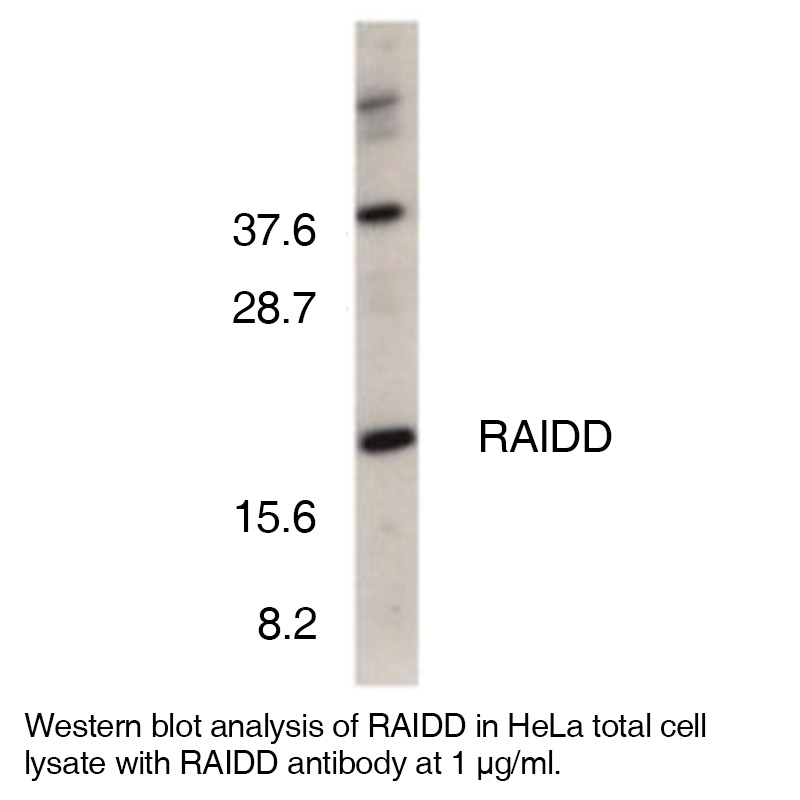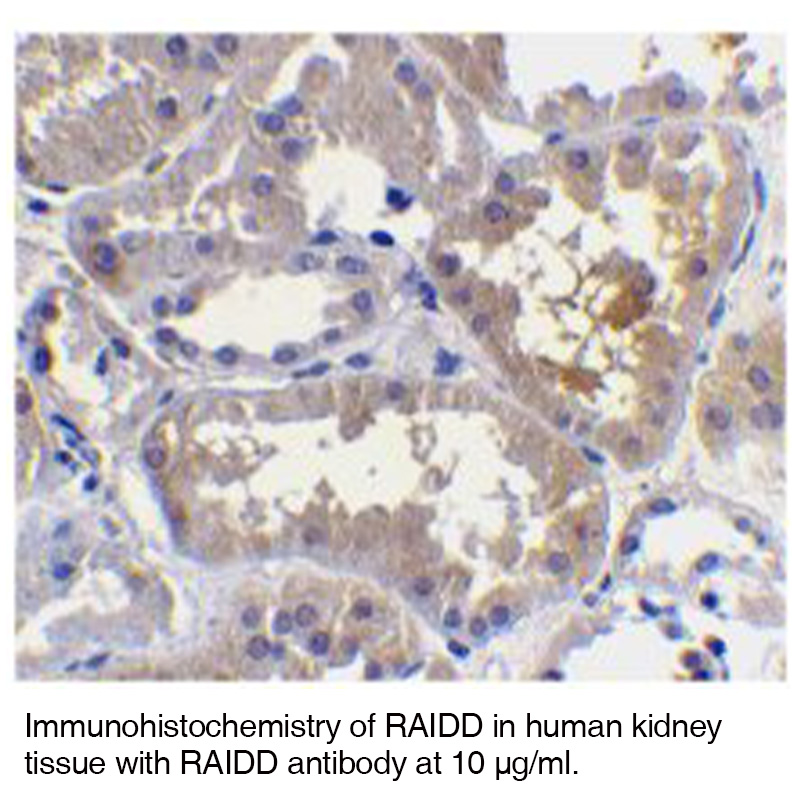Anti-Human RAIDD (CT)
Data
- -
- -
Antibody DetailsProduct DetailsReactive Species Human Host Species Rabbit Immunogen PN:R1004 Product Concentration 0.5 mg/ml Formulation This polyclonal antibody is formulated in phosphate buffered saline (PBS) pH 7.4 containing 0.02% sodium azide as a preservative. Storage and Handling This polyclonal antibody is stable for at least one week when stored at 2-8°C. For long term storage, aliquot in working volumes without diluting and store at –20°C in a manual defrost freezer. Avoid Repeated Freeze Thaw Cycles. Country of Origin USA Shipping Next Day Ambient RRIDAB_2831662 Each investigator should determine their own optimal working dilution for specific applications. See directions on lot specific datasheets, as information may periodically change. DescriptionDescriptionSpecificity Rabbit Anti-Human RAIDD recognizes an epitope near the C-terminus of Human RAIDD. This polyclonal antibody was purified using affinity chromatography. Background Apoptosis, or programmed cell death, occurs during normal cellular differentiation and development of multicellular organisms. Apoptosis is induced by certain cytokines including TNF and Fas ligand of the TNF family through their death domain (DD)-containing receptors, TNFR1 and Fas. The death signals are transduced by a group of DD-containing adapter molecules. A novel cell death adapter was recently identified by two independent groups and designated RAIDD (RIP-associated ICH-1/CED-3-homologous protein with DD) and CRADD (caspase and RIP adapter with DD),1 RAIDD contains a DD and a CARD (for caspase recruitment domain) which interact with RIP and caspase, respectively, to transduce death signals. RAIDD is constitutively expressed in many tissues and mediates apoptosis caused by Fas and TNFR-1. PubMed References & Citations1. Duan, H. et al. (1997) Nature 385:86 2. Ahmad, M. et al. (1997) Cancer Res. 57:615 3. Hofmann, K. et al. (1997) Trends Biochem. Sci. 22:155 Technical ProtocolsCertificate of Analysis |
Related Products
- -
- -
Prod No. | Description |
|---|---|
R1002 | |
R1003 | |
R1004 | |
R1005 |




